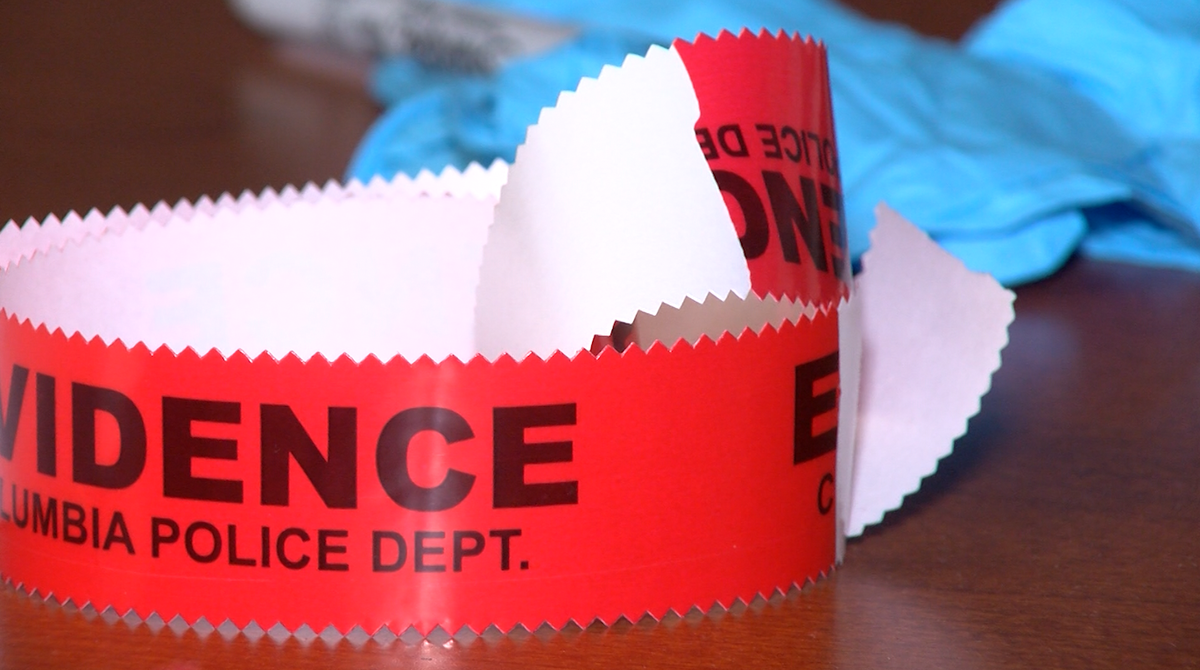Columbia police describe process of collecting, storing evidence

Meghan Drakas
COLUMBIA, Mo. (KMIZ)
As of Monday, the Columbia Police Department has documented fewer than 7,400 crimes in Columbia in 2025, according to CPD’s crime dashboard.
During the investigation of each crime, police try and collect evidence to build a case. This evidence can include conversations, eye witness testimony and physical evidence such as documents, shell casings, surveillance video or a weapon.
CPD Lt. Matt Gremore said every officer has plastic gloves and evidence bags inside their cars.
“When I was a patrol officer, I would carry a box of these in my car just to have in case because they’re great for multiple reasons,” Gremore said. “If you’re picking up evidence or dealing with somebody bleeding, the gloves can protect your more, so there’s a lot of reasons you would want them.”
He said the biggest reason is to make sure police don’t contaminate the evidence they’re collecting at a crime scene. Gremore said once evidence is collected at a crime scene, it’s typically placed in a paper or plastic bag.
He said paper is used for DNA evidence for items that would mold in plastic such as shell casings. Gremore said if a scene has five, 9-millimeter shell casings, they can be collected in a box, taped with evidence tape, initialed by the seals and then placed into a paper bag.
 CPD Lt. Matt Gremore on Sept. 18, 2025, shows how police put a shell casing into an evidence box, seal it with tape and initial the seal to protect the integrity of the evidence at a crime scene.
CPD Lt. Matt Gremore on Sept. 18, 2025, shows how police put a shell casing into an evidence box, seal it with tape and initial the seal to protect the integrity of the evidence at a crime scene.
Evidence stored in plastic bags would include any evidence someone such as a prosecutor or detective would want to be able to see without having to open the bag. Gremore said evidence tape and initials are also used on plastic evidence bags. The bags have information sections which include information such as the crime, suspect, victim and time of recovery.
Yellow evidence markers are also placed along a crime scene to separate different pieces of evidence. At a shooting scene, it is a common occurrence to see police place yellow numerical markers near items including shell casings.
 At least 24 evidence markers could be seen at the shooting scene of Jamar Hicks and two others along Trimble Road in east Columbia on July 16, 2017.
At least 24 evidence markers could be seen at the shooting scene of Jamar Hicks and two others along Trimble Road in east Columbia on July 16, 2017.
In 2024, Columbia police investigated 351 crimes involving a gun, according to data provided by the Missouri State Highway Patrol. According to Columbia’s crime dashboard, there were 110 shots fired incidents in 2024.
Gremore said it’s common for police to revisit a night time crime scene such as a shooting, to double check to see if any evidence is missed.
“Sometimes we have to go out with metal detectors [and] sometimes it’s better in the daylight,” Gremore said. “We actually utilize a dog with the ATF that can smell shell casings. I’ve seen it firsthand where the dog does fantastic work of finding items like that.”
Evidence is kept for different lengths of time depending on the statute of limitations for crimes, Gremore said.
“For example, [in a homicide case] the state as a law says you have to keep that evidence for a minimum of 50 years,” Gremore said. “Any evidence where there’s not a statute of limitations and it’s unsolved, you would keep that evidence indefinitely.”
But he said the statute of limitations changed in some cases for dealing with evidence once DNA became more involved in investigations.
Gremore said the location of where evidence is stored is very specific depending on the type of evidence and if there’s any testing being done on the object. He said some evidence for CPD will be stored at the MSHP Crime Lab, some goes to private labs and some is stored locally.
After a case has been solved, Gremore said eventually police will get a request from the prosecutor’s office to dispose of evidence. Depending on the type of evidence, he said it can be returned to the owner’s or it is disposed. If the evidence involved is money, a few things can happen to it.
“Depending on what the charge is, you can have money that goes to forfeiture or you have money that’s seized as an investigation,” Gremore said. “Typically, I would say a majority of the time, it is returned to the owner after a case is over. An example would be if you have a gas station that got robbed and the suspect’s caught with the money that they stole in the robbery, that money would be returned, eventually back to the owner of the gas station.”
Watch the latest “Mid-Missouri’s Cold Case Files: The Case of Jamar Hicks” at 10 p.m. Thursday on ABC 17 News.